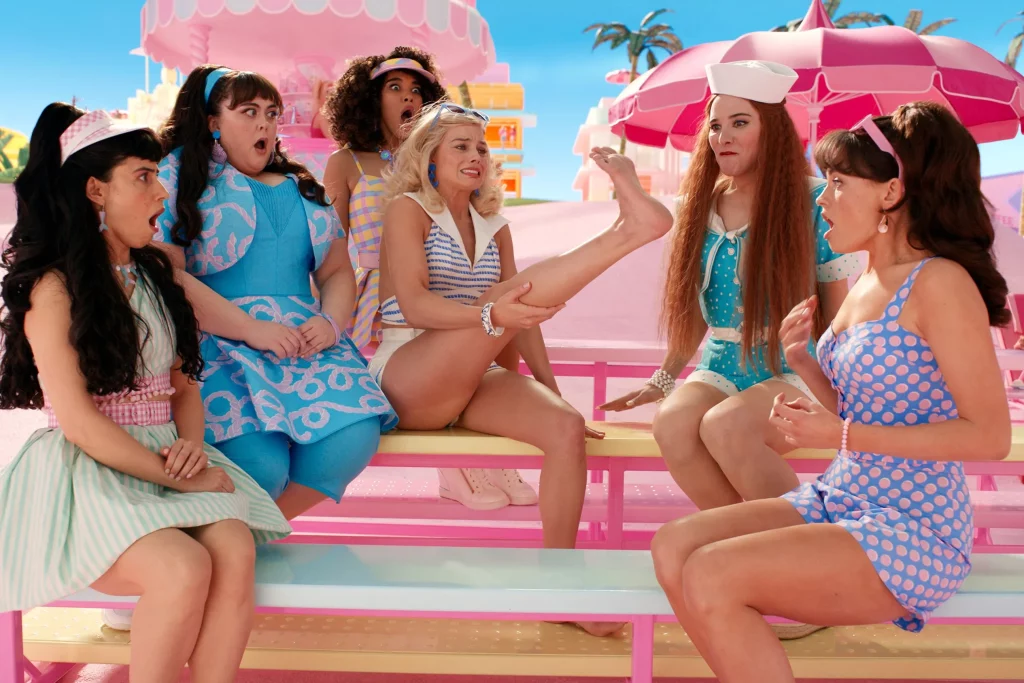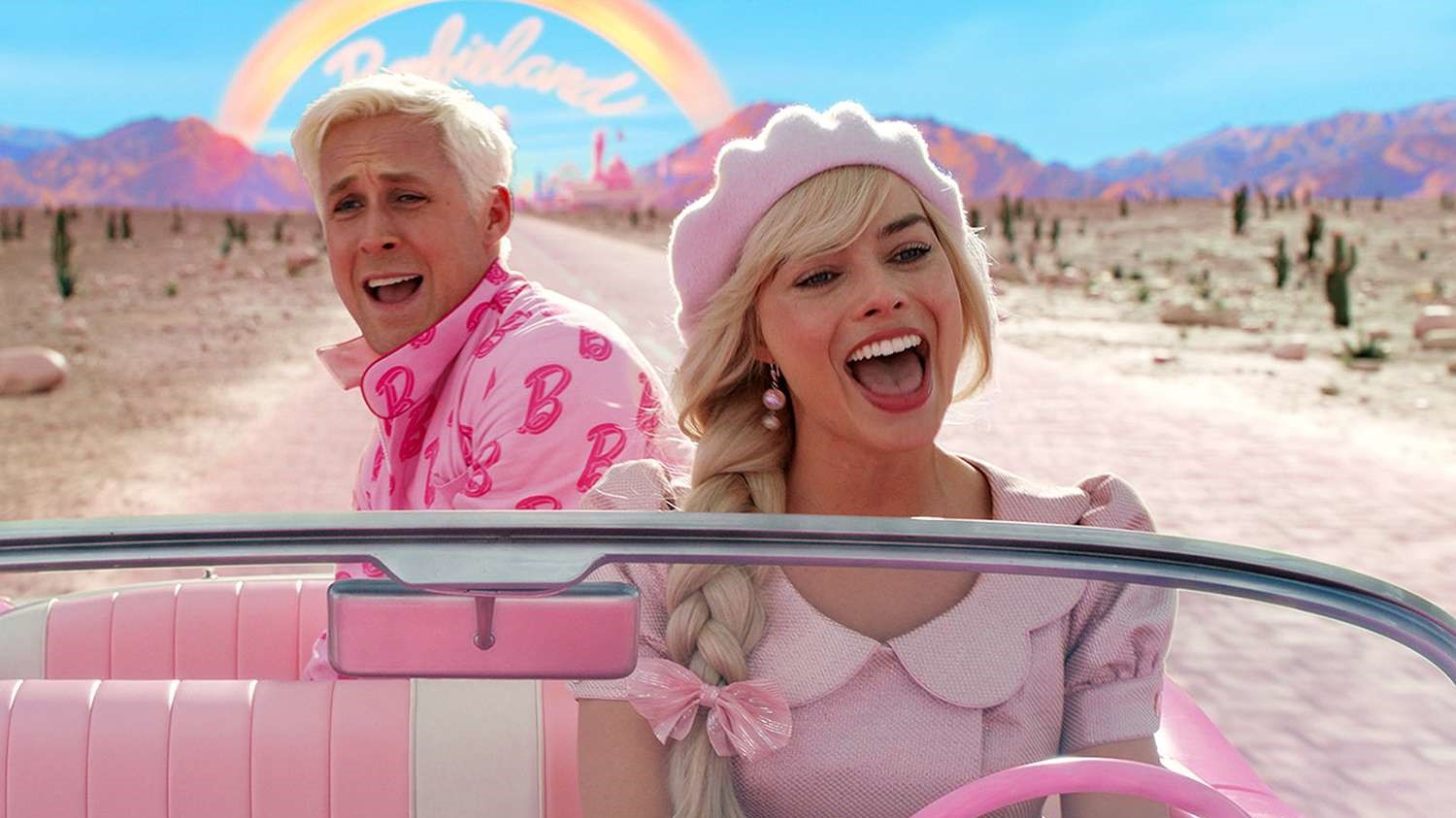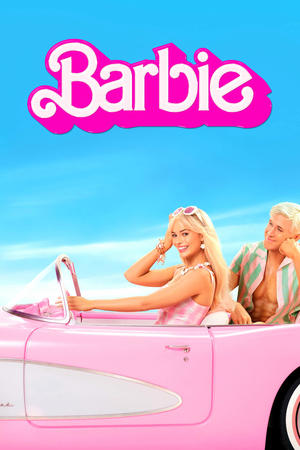Can a doll with an ingratiating smile, impossible curves, and boobs ready for liftoff be a feminist icon? That’s a question that swirls through Greta Gerwig’s “Barbie,” a live-action, you-go-girl fantasia about the world’s most famous doll. For more than half a century, Barbie has been, by turns, celebrated as a font of girlhood pleasure and play and rebuked as an instrument of toxic gender norms and consumerist ideals of femininity. If Barbie has been a culture-war hot spot for about as long as it’s been on the shelves, it’s because the doll perfectly encapsulates changing ideas about girls and women: our Barbies, ourselves.
Gerwig carves a comic pathway into these representational thickets partly by means of mythology. In outline, the movie offers a savvy, updated riff on the Greek myth of Pygmalion, which has inspired myriad stories about men and the women they invent. In the original, a male sculptor creates and falls in love with a beautiful statue; in George Bernard Shaw’s play “Pygmalion” and in the Lerner-Loewe musical “My Fair Lady,” she’s a Cockney flower girl. In “Barbie,” by contrast, it’s the imaginations of the girls and women who play with the doll that give it something like life, a fitting shift for a movie that takes sisterhood as a starting point.
Barbie Land: A Toyland Gated Community
These imaginers first and foremost include Gerwig herself. The movie opens with a prelude that parodies the “dawn of man” sequence in “2001: A Space Odyssey” (with girls, not ape-men), and then shifts to Barbie Land, a kaleidoscopic wonderland. There, Gerwig sets the scene and tone with Barbie (Margot Robbie) — who calls herself stereotypical Barbie — soon floating out of her Dreamhouse, as if she were being lifted by a giant invisible hand. It’s a witty auteurist flourish. The Mattel brand looms large here, but Gerwig, whose directorial command is so fluent she seems born to filmmaking, is announcing that she’s in control.

Written by Gerwig and her partner, Noah Baumbach, the movie introduces Barbie on yet another perfect day in Barbie Land, in which dolls played by humans exist in what resembles a toyland gated community. There, framed by a painted mountain range, Barbie and a diverse group of other Barbies rule, living in homes with few exterior walls. With their flat roofs, clean lines, and pink décor — a spherical TV, Eero Saarinen-style tulip table and chairs — the overarching look evokes the era when Barbie first hit the market. It’s very Palm Springs circa 1960, an aesthetic that could be called bubble-gum midcentury modern.
Gerwig has fun in Barbie Land, and in her role as a friendly playmate, she works hard to ensure you do too. She takes you for a leisurely spin, cranks the tunes, stages some old-school, Hollywood-style musical numbers, and brings in those eternal sidekicks, the Kens (with a scene-stealing Ryan Gosling chief among them). The production design (Sarah Greenwood) and costumes (Jacqueline Durran) offer ticklish pleasure but also underscore this place’s artificiality. Barbie, et al., are of our world and not, existing in a plasticky paradise that proves less hospitable when she begins having un-Barbie thoughts and experiences: She thinks of death, and then her feet, which are molded to fit high heels, go flat.
Barbie’s Journey to the Real World
This change to Barbie’s body is played for laughs — the other Barbies are horrified — but it’s crucial to the plot and to Gerwig’s intentions. Once Barbie’s feet touch the ground, she seeks advice from a misfit version of the doll (the invaluable Kate McKinnon), who prescribes Birkenstocks and a trip to the real world. Soon, Barbie — with Ken riding shotgun — journeys into something like reality; that they land in Los Angeles reads like a puckish joke. There, Barbie is astonished to discover sexism, and Ken is delighted to discover patriarchy, contrapuntal revelations that generate further comedy and something like enlightenment.
Gerwig handles the transition between realms smoothly, but even in this bouncy, happy movie, reality proves a bummer. It’s amusing when Barbie points out a billboard filled with women, mistaking them for the Supreme Court because that’s what the court looks like in Barbie Land, just with more pink. She learns how wrong she was, which is to Gerwig’s point. But the weight of our world, emblematized at least for this viewer by the real Court’s overturning of Roe v. Wade, proves unbearably heavy. However politically sharp, the gag is an unpleasant reminder of all the profoundly unfunny ways in which this world, with its visible and invisible hands, tries to control women, putting them into little boxes.
Mattel’s Attempts to Make Barbie Relevant
Mattel has long tried to reconcile Barbie with the real world. The toy’s origins lie with Ruth Handler, a founder of Mattel who wanted to make a doll for girls like her daughter, Barbara. Handler found her inspiration in Europe with an adult-looking German doll called Bild Lilli that Mattel reconfigured. Some buyers pushed back: “The idea of a doll with breasts was not received well,” Handler said in a 1994 Lilith magazine interview.
Barbie’s breasts and the rest of her continued to generate criticism, including from physicians who treat body dysmorphia. In recent years, Mattel has tried to make the doll more culturally relevant, adding careers and not just new merch to its product portfolio. “When a girl plays with Barbie she imagines everything she can become,” a 2015 Mattel ad promised during a period of sluggish sales. Its Fashionistas line introduced new facial shapes, eye colors, and skin tones, followed by petite, curvy, and tall versions, a diversity that has paid off. In 2019, Mattel announced that this Barbie movie was going forward with Robbie as the star.
Margot Robbie’s Captivating Performance
As a performer, Robbie always pops onscreen, and her turn here as a classic blond bombshell who has more going on than that sexist stereotype suggests is charming and subtly phased; you can see the light turn on gradually behind her eyes. Like America Ferrera’s sympathetic Mattel employee, Robbie warms the movie, expanding and deepening its emotions. That’s particularly necessary because Ken’s comic obtuseness and arc — as well as Gosling’s deadpan and boy-band dance moves — recurrently draw attention away from the actress and her character. However narratively motivated, this upstaging of Barbie effectively suggests that only the Kens of the world need their consciousness raised.
The real world may initially bewilder Barbie, but she figures it out. That’s just what you’d expect given that Mattel partnered with Warner Bros. for this movie and is banking big on it. For her part, Gerwig figures it out by vibing on joy, tapping into nostalgia, showcasing her large cast (Will Ferrell, Issa Rae, Simu Liu, Dua Lipa, Helen Mirren, Michael Cera, etc.) and, for the most part, dodging the thorny contradictions and the criticisms that cling to the doll. And while Gerwig does slip in a few glints of critique — as when a teenage girl accuses Barbie of promoting consumerism, shortly before she pals up with our heroine — these feel more like mere winks at the adults in the audience than anything else.
Like “Air,” Ben Affleck’s recent movie about how Nike signed Michael Jordan, as well as other entertainments tethered to their consumer subjects, “Barbie” can only push so hard. These movies can’t damage the goods, though I’m not sure most viewers would want that; our brands, ourselves, after all. That said, Gerwig does much within the material’s inherently commercial parameters, though it isn’t until the finale — capped by a sharply funny, philosophically expansive last line — that you see the “Barbie” that could have been. Gerwig’s talents are one of this movie’s pleasures, and I expect that they’ll be wholly on display in her next one — I just hope that this time it will be a house of her own wildest dreams.
Conclusion
In “Barbie,” Greta Gerwig takes on the challenge of reimagining the iconic doll through a feminist lens. The movie explores the cultural impact of Barbie, the power of imagination, and the journey towards self-discovery. With Margot Robbie’s captivating performance and Gerwig’s directorial prowess, “Barbie” offers an entertaining and thought-provoking experience. While the film operates within commercial parameters, it still manages to infuse moments of critique and reflection. Gerwig’s talents leave audiences eager to see her future endeavors, hoping for even bolder explorations in the realm of filmmaking.
FAQs
1. Is “Barbie” suitable for children?
“Barbie” is rated PG-13 and may contain content that parents might find unsuitable for younger children. Parents are advised to review the film’s rating and content before deciding.
2. Does the film address body image concerns associated with Barbie?
While the film touches on Barbie’s representation, it primarily focuses on themes of feminism, sisterhood, and self-discovery. The broader conversation around body image is not extensively explored.
3. What is the significance of the Greek myth of Pygmalion in the movie?
The Greek myth of Pygmalion serves as a narrative framework for exploring the relationship between creators and their creations. In “Barbie,” it represents the imaginative power of girls and women who play with the doll.
4. Are there any social commentaries present in the film?
“Barbie” subtly comments on consumerism, gender norms, and the challenges faced by women in society. However, its commercial nature limits the depth of critique it can offer.
5. Will “Barbie” inspire a new wave of Barbie-related merchandise?
Given the ongoing popularity of the Barbie brand, it is likely that the film will lead to new merchandise releases. Mattel has a history of expanding the Barbie product line based on cultural relevance and audience demand.
Barbie Movie Review
Overall
Summary


